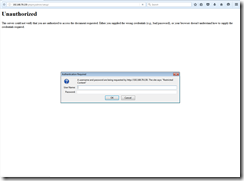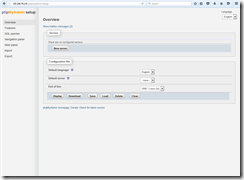Learn how to configure HTTP Basic Authentication for your Apache Server with this comprehensive guide. Enhance your web server security by controlling access to your resources. #centlinux #linux #apache
Table of Contents
Problem Statement
Sometimes we have sections of websites (especially admin panels), that we don’t want to be accessed by public. Most of the web applications have their own authentication methodology but we can also create another layer of security by means of Basic Authentication with Apache HTTP Server.
In this article, we will enable Basic Authentication for the setup directory of phpMyAdmin application with Apache HTTP Server.

Read Also: How to install phpMyAdmin on Linux
What is HTTP Basic Authentication?
HTTP Basic Authentication is a simple authentication scheme built into the HTTP protocol. It is used to protect web resources by requiring users to provide a username and password to access them. Here are the key features and aspects of HTTP Basic Authentication:
- Username and Password: Users must provide a valid username and password to access protected resources.
- Base64 Encoding: The username and password are concatenated with a colon and then encoded using Base64 before being transmitted over the network.
- Authorization Header: The encoded credentials are sent in the “Authorization” header of the HTTP request.
- Simple and Easy to Implement: Basic Authentication is straightforward to set up and use, making it a popular choice for simple use cases.
- No Encryption: The credentials are not encrypted by Basic Authentication itself. If transmitted over HTTP, they can be intercepted and decoded easily. Therefore, it is strongly recommended to use Basic Authentication over HTTPS to encrypt the entire communication.
- Access Control: By validating the credentials, the server can control access to specific resources, ensuring only authorized users can access them.
Despite its simplicity, HTTP Basic Authentication should be used with caution, preferably in combination with HTTPS, to ensure that the credentials and data are securely transmitted.
Master Apache Web Server from scratch and boost your web hosting skills with our comprehensive online course!

Linux Server Specification
We have a preconfigured LAMP Server, and we have deployed phpMyAdmin application on it.
| Hostname: | lampserver.example.com |
| IP Address: | 192.168.79.130/24 |
| Operating System: | CentOS 7.0 Server |
| Web Server: | Apache/2.4.6 |
GL.iNet GL-BE9300 (Flint 3) Tri-Band WiFi 7 Router, High-Speed 6GHz Gaming WiFi Router for Wireless Internet, Long Range, 5 x 2.5G VPN Routers for Fiber Optic Modem, Computer Routers, Home & Business
$189.90 (as of September 18, 2025 04:24 GMT +00:00 – More infoProduct prices and availability are accurate as of the date/time indicated and are subject to change. Any price and availability information displayed on [relevant Amazon Site(s), as applicable] at the time of purchase will apply to the purchase of this product.)Configure HTTP Basic Authentication
First of all, we must create a password file that Apache can read. For this purpose, we can use htpasswd command. htpasswd command is packaged with httpd-tools package. However, you may found it in apache2-utils package while installing on other Linux distros.
Check if required packages are already installed on the Server.
rpm -qa | grep httpdOutput:
httpd-tools-2.4.6-40.el7.centos.x86_64
httpd-2.4.6-40.el7.centos.x86_64
Since, we have a preconfigured LAMP Server, therefore, the httpd-tools package is already installed on our machine.
Create password file and add two users. Omit the –c option while adding the second user to already created .htpasswd file, or it will overwrite the file.
htpasswd -c /var/www/html/phpmyadmin/setup/.htpasswd ahmer
htpasswd /var/www/html/phpmyadmin/setup/.htpasswd malikCheck contents of the password file.
cat /var/www/html/phpmyadmin/setup/.htpasswdOutput:
ahmer:$apr1$OLXoiAD6$gtz1kEOcGXXSPVTHARTBt1
malik:$apr1$W1rsynDg$VLbBWc2neqIq3W3LHmfuo1
As you know, we can alternatively define Apache directives at various locations like
a) in httpd.conf file,
b) in a separate .conf file created within /etc/httpd/conf.d directory, or
c) override by using a .htaccess file.
If you have set Allow Override for your web site than you can implement Basic Authentication using .htaccess file. One advantage of .htaccess is that, it won’t require the httpd service to restart after configuration. So, for a busy web server, this technique is better.
cat >> /var/www/html/phpmyadmin/setup/.htaccess << EOF
AuthType Basic
AuthName "Restricted Content"
AuthUserFile /var/www/html/phpmyadmin/setup/.htpasswd
Require valid-user
EOF Now, try to access the URL http://192.168.79.130/phpmyadmin/setup/ using your browser. it will ask you for authentication.

Now, you have to login with a valid user and password to get access to this section of website.

HTTP Basic Authentication with Apache web server has been configured successfully.
Parkour Mega Play in grnd Jump
$18.99 (as of September 17, 2025 18:03 GMT +00:00 – More infoProduct prices and availability are accurate as of the date/time indicated and are subject to change. Any price and availability information displayed on [relevant Amazon Site(s), as applicable] at the time of purchase will apply to the purchase of this product.)Final Thoughts
Configuring HTTP Basic Authentication for your Apache Server is an essential step to enhance your web server security by controlling access to your resources. By following this guide, you can set up authentication effectively and protect your sensitive data.
Looking for a Linux server expert? I provide top-tier administration, performance tuning, and security solutions for your Linux systems. Explore my Freelancer profile for details!



Leave a Reply
Please log in to post a comment.